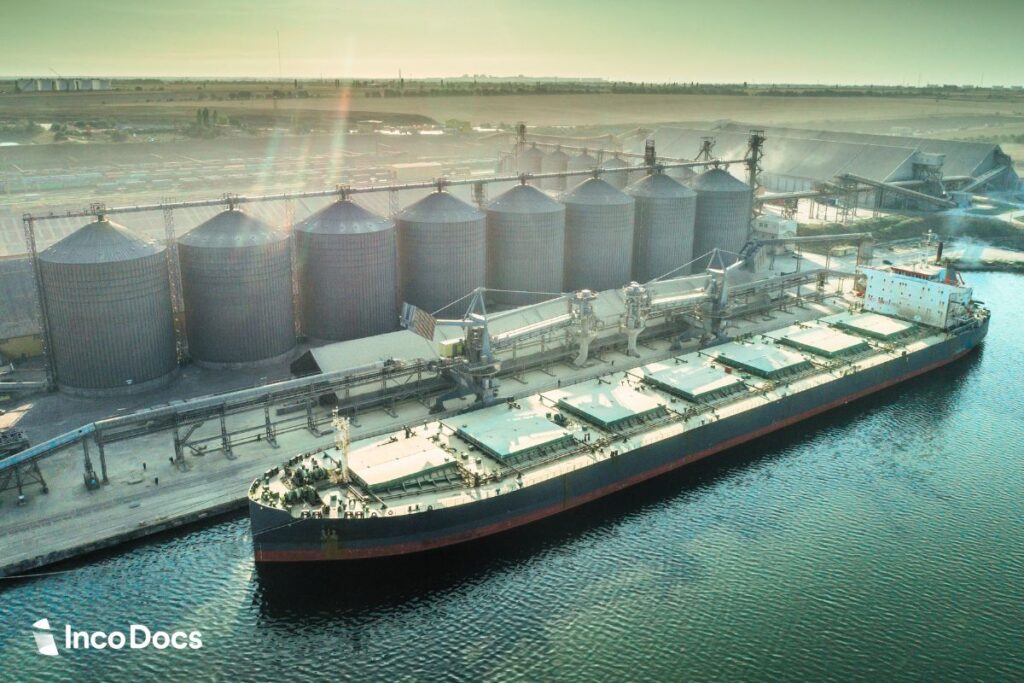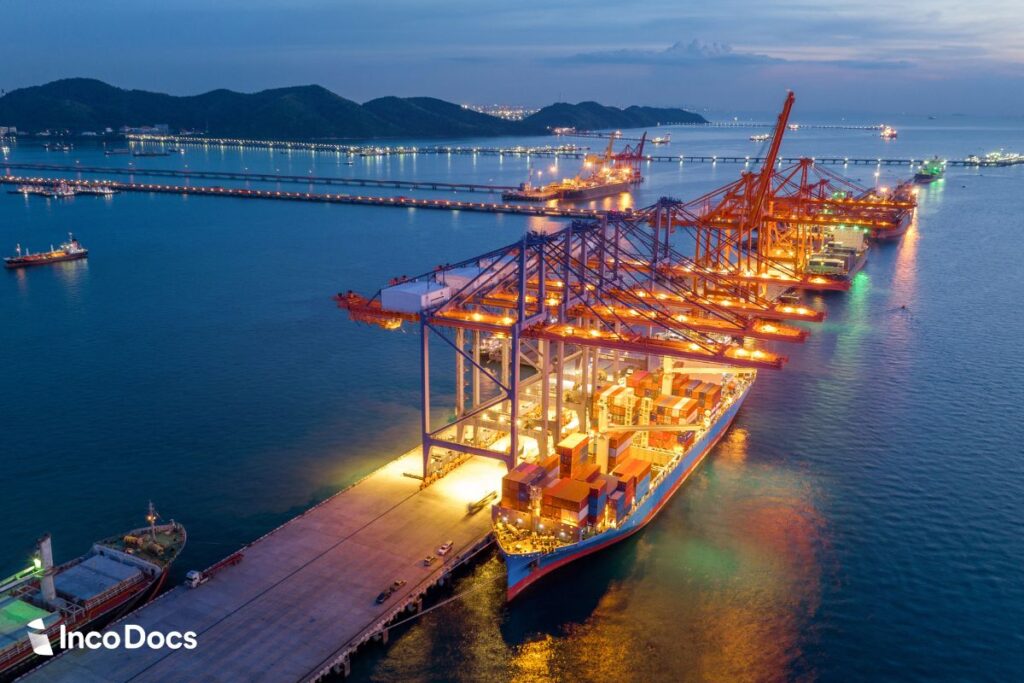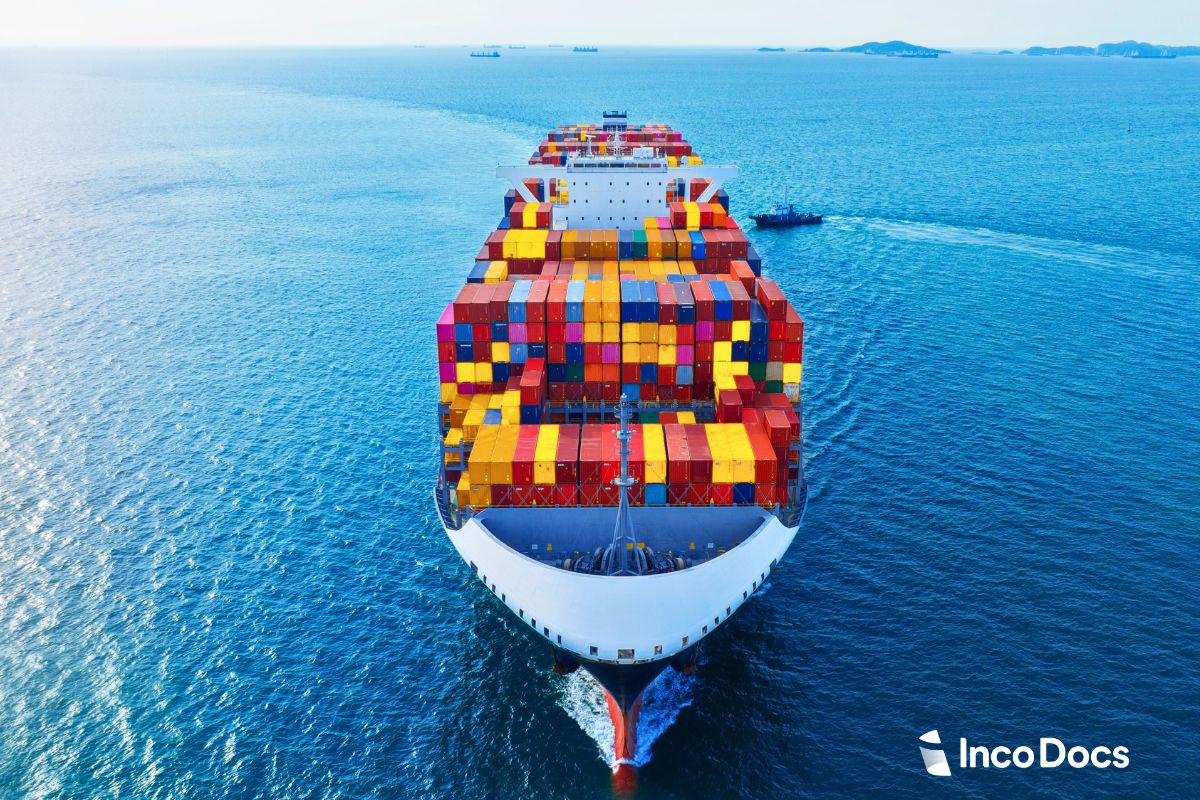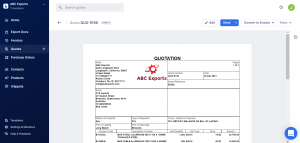What is ocean freight?
Ocean freight is a method of shipping goods internationally by sea. It involves transporting cargo across oceans on specialized ships and is particularly cost-effective for large or heavy shipments.
The process of ocean freight shipping involves several key steps to ensure the safe and efficient transport of goods. Initially, goods are packed and prepared for shipping, then loaded onto a cargo ship. The ship then travels across the ocean to the destination port, where upon arrival, the goods are unloaded. Finally, the goods undergo customs clearance and are delivered to their final destination.
Additionally, ocean freight utilizes shipping containers to transport goods, which come in standard sizes, such as 20-foot and 40-foot units. Specialized containers are also employed for specific types of goods, including liquids or hazardous materials, enhancing the efficiency and safety of the shipping process.
Types of ocean freight services
There are different types of international ocean freight export services for international trade. We’ll cover 11 of them. These services cater to various shipping needs, from large machinery to perishable goods. Each type offers unique benefits.
Full Container Load (FCL)
FCL means one shipper uses the entire container. It is ideal for large shipments, such as furniture, machinery, or bulk products. With FCL, goods are packed and sealed in a container at the origin and remain untouched until they reach the destination. This method offers more security and reduces the risk of damage since there is minimal handling. FCL is also faster because there are fewer stops and transfers compared to other methods.
Less than Container Load (LCL)
LCL (Less than Container Load) consolidates shipments from multiple shippers into one container, making it a cost-effective solution for small businesses that ship smaller quantities regularly. While LCL is economical because shippers share the container space, it involves more handling as goods are consolidated and deconsolidated, which may increase the risk of damage.
Also read The Difference between FCL vs LCL shipping
Roll-On/Roll-Off (Ro-Ro)
Ro-Ro ships carry vehicles and machinery that roll on and off the ship. This method is highly efficient for transporting cars, trucks, buses, and heavy equipment. Vehicles are driven onto the vessel at the port of origin and driven off at the destination port, reducing the need for lifting equipment. Ro-Ro shipping is straightforward and less costly for vehicle transport, ensuring vehicles arrive in good condition.
Break Bulk
Break bulk shipping is used for oversized or heavy items that do not fit in standard containers. Items are loaded individually and can include machinery, construction materials, and large equipment. Goods are placed directly into the ship’s hold or on flat racks. Break bulk allows for the transport of large and oddly shaped cargo that cannot be containerized. However, it usually requires more handling and specialized equipment.
Liquid Bulk Shipping
This service transports liquids in large quantities, including oil, chemicals, and liquefied natural gas (LNG). Specialized tankers, such as oil tankers and chemical carriers, are used for these shipments. These tankers are equipped with tanks that can safely contain and transport hazardous and non-hazardous liquids. Liquid bulk shipping ensures safe handling and efficient transportation of large volumes of liquids.
Dry Bulk Shipping

Dry bulk ships transport unpackaged bulk cargo such as grains, coal, minerals, and ores. These ships have large open holds designed to carry bulk goods in loose form. Dry bulk shipping is ideal for transporting large volumes of homogeneous materials. Loading and unloading are done using conveyors, cranes, or scoops, making it efficient for bulk commodities.
Reefer Shipping
Reefer containers are refrigerated units used to transport perishable goods like food, pharmaceuticals, and flowers. These containers maintain a controlled temperature throughout the journey, ensuring that products remain fresh. Reefer shipping is essential for goods that are sensitive to temperature changes. These containers can regulate temperatures from below freezing to room temperature, making them versatile for various perishable items.
Flat Rack Containers
Flat rack containers are used for oversized cargo that does not fit in standard containers. They have collapsible sides and ends, making them ideal for transporting large machinery, pipes, and vehicles. Flat racks allow for easy loading and unloading from the sides and the top. They provide flexibility for transporting wide and heavy items that require special handling.
Open Top Containers
Open top containers have a removable roof, allowing for loading cargo from the top. These containers are suitable for heavy and tall items such as timber, scrap metal, and machinery. Open top containers are ideal for cargo that cannot be easily loaded through the doors of a standard container. They provide an easy solution for shipping over-height cargo.
Tank Containers
Tank containers are designed to carry liquids, gases, and powders. They are built to international standards for safe transportation. Commonly shipped items include chemicals, wine, and edible oils. Tank containers are made of stainless steel and are surrounded by protective layers. They provide a safe and efficient way to transport hazardous and non-hazardous liquids in bulk.
High Cube Containers
High cube containers are taller than standard containers, providing extra space for voluminous cargo. They are typically 9.5 feet tall, compared to the standard 8.5 feet. High cube containers are used for lightweight but bulky goods such as furniture, cotton, and plastic products. The additional height allows for more storage space without increasing the container’s footprint.
Ocean vs Sea Freight
Although the terms are often used interchangeably the key differences between ocean and sea freight generally relate to distance travelled, vessel size, and container types.
Ocean freight is best for long international trips using large ships and standard containers like 20-foot or 40-foot units. Sea freight works well for shorter, regional trips with smaller vessels and various cargo types. Knowing these differences helps businesses choose the right shipping method.
Key Differences:
- Distance:
- Ocean freight is for international and intercontinental shipments.
- Sea freight is for regional or coastal shipments.
- Vessels:
- Ocean freight uses larger ships for long journeys.
- Sea freight can use smaller vessels for shorter trips.
- Containers:
- Ocean freight often uses standardized containers like 20-foot and 40-foot units.
- Sea freight may use a variety of cargo types, including bulk and break bulk.
How are ocean freight rates calculated

Ocean freight rates vary based on several factors. These include shipment size, weight, and distance between ports. Understanding these costs helps in planning and budgeting for shipping needs.
- Shipment Volume and Weight: The size and weight of the shipment significantly affect costs. Larger and heavier shipments are more expensive. Charges are often calculated per cubic meter or per ton.
- Distance and Route: The distance between the origin and destination ports impacts the cost. Longer routes typically cost more due to fuel and time. The specific route can also affect prices, with popular routes often being cheaper.
- Container Type and Size: Different types of containers come with different costs. Standard 20-foot and 40-foot containers are common. However, specialized containers like refrigerated or tank containers are more expensive due to their unique requirements.
- Freight Class and Cargo Type: The classification of the cargo based on its nature affects the cost. Fragile or hazardous items may require special handling, increasing the cost. High-value goods might also incur higher insurance premiums.
- Market Demand and Seasonality: Shipping rates fluctuate with market demand. During peak seasons, such as holiday periods, rates can rise due to higher demand. Off-peak seasons might offer lower rates.
- Fuel Costs and Surcharges: Fuel prices directly impact shipping costs. Carriers may add fuel surcharges to cover these expenses. Surcharges can fluctuate with global fuel prices.
- Currency Exchange Rates: Fluctuations in currency exchange rates can influence costs. When shipping internationally, changes in currency values affect the overall price.
- Service Level and Additional Services: The required level of service can affect costs. Basic services are cheaper, while additional services like packaging, warehousing, and expedited shipping increase costs.
- Carrier Contracts and Negotiations: Rates can vary based on contracts and negotiations between shippers and carriers. Long-term contracts might offer better rates than one-time shipments.
- Port Fees and Handling Charges: Ports charge fees for handling and processing shipments. These include loading, unloading, and storage charges. These fees vary by port and can significantly impact overall costs.
- Insurance: Insurance coverage for the shipment is an additional cost. It protects against damage, loss, or theft during transit. The premium depends on the value and nature of the goods.
Example of ocean freight costs
Here’s an example table showing how different factors affect ocean freight costs. Note that these are example figures and actual costs can vary.
| Cost Factor | Description | Cost (Example) |
|---|---|---|
| Shipment Volume and Weight | 20-foot container (full) | $1,000 |
| Distance and Route | New York to Shanghai | $3,000 |
| Container Type and Size | Standard 40-foot container | $1,500 |
| Freight Class and Cargo Type | Standard goods | $200 |
| Market Demand and Seasonality | Peak season surcharge | $500 |
| Fuel Costs and Surcharges | Fuel surcharge | $300 |
| Currency Exchange Rates | Currency fluctuation adjustment | $100 |
| Service Level and Additional Services | Warehousing fee | $150 |
| Carrier Contracts and Negotiations | Long-term contract discount | -$200 |
| Port Fees and Handling Charges | Loading/unloading fees | $250 |
| Insurance | Insurance premium | $150 |
| Total Cost | $6,050 |
Ocean shipping transit times
Ocean shipping transit times vary significantly depending on the route, distance, and seasonal factors. Here is a table showcasing typical transit times between various major ports worldwide:
| From | To | Transit Time (Days) |
|---|---|---|
| Shanghai, China | Los Angeles, USA | 13-20 |
| Shenzhen, China | Miami, USA | 31-35 |
| Rotterdam, Netherlands | New York, USA | 9-12 |
| Hamburg, Germany | New York, USA | 10-14 |
| Tokyo, Japan | Sydney, Australia | 16-22 |
| Singapore | Rotterdam, Netherlands | 25-28 |
| Dubai, UAE | London, UK | 28-34 |
| Hong Kong | San Francisco, USA | 16-18 |
| Mumbai, India | Cape Town, South Africa | 15-20 |
| Shanghai, China | Antwerp, Belgium | 30-33 |
These times are estimates and can vary due to factors like port congestion, weather conditions, and seasonal variations. For instance, shipping from Shanghai to Los Angeles typically takes 13-20 days, while routes like Shenzhen to Miami might take around 31-35 days
Ocean freight Pros & Cons
Ocean freight offers several advantages, such as cost-effectiveness, capacity for large or bulk cargo, and lower environmental impact. It is suitable for transporting various goods and has extensive global reach, connecting almost all parts of the world. However, it also has drawbacks, including long transit times, potential for delays, risk of damage or loss, complex documentation / customs procedures and port limitations.
Pros of Ocean Freight:
- Cost-Effectiveness: More affordable for large shipments.
- Capacity for Large or Bulk Cargo: Handles bulk and oversized items efficiently.
- Lower Environmental Impact: Emits less CO2 per ton of cargo.
- Versatility in Cargo Types: Suitable for many types of goods.
- Global Reach: Extensive routes worldwide.
Cons of Ocean Freight:
- Long Transit Times: Takes weeks or months.
- Potential for Delays: Subject to delays from various factors.
- Risk of Damage or Loss: Cargo can be damaged or lost.
- Complex Documentation and Customs Procedures: Requires detailed paperwork.
- Port Limitations: Some ports cannot handle large ships.
Also read 10 Largest ports in North America
When to choose ocean freight

Ocean freight is advantageous for certain logistics requirements, especially when it comes to moving large, heavy, or bulky items across great distances. It tends to be more affordable than air freight, making it an appealing choice for budget-sensitive shipments. If timely delivery isn’t crucial, the extended transit times of ocean freight can be a suitable option. This mode of transportation is also better suited for carrying hazardous materials and oversized cargo that might be prohibited on aircraft. Moreover, for companies aiming to reduce their environmental impact, ocean freight presents a more sustainable option with a significantly lower carbon footprint.
When to Choose Ocean Freight:
- Large, Heavy, or Bulky Goods: Best for shipments that are large or heavy.
- Cost-Effectiveness: More affordable for budget-conscious shipments.
- Non-Urgent Deliveries: Suitable for goods that do not require fast delivery.
- Hazardous Materials: Allows for the transport of hazardous and oversized items.
- Environmental Concerns: Offers a more sustainable shipping option with lower carbon emissions.







